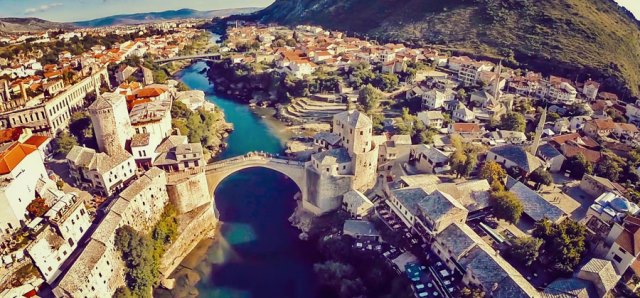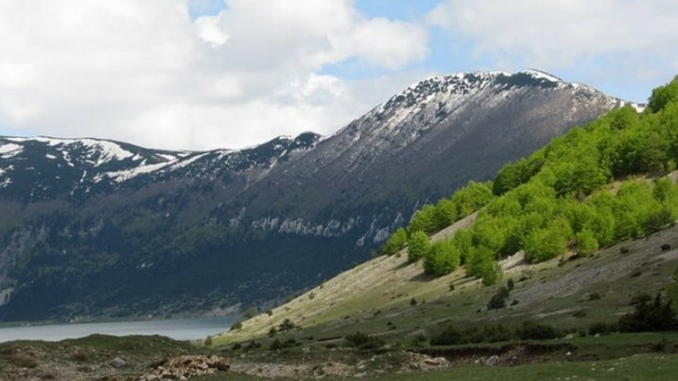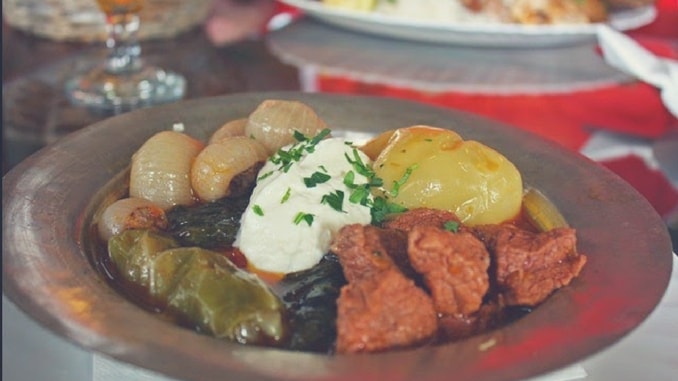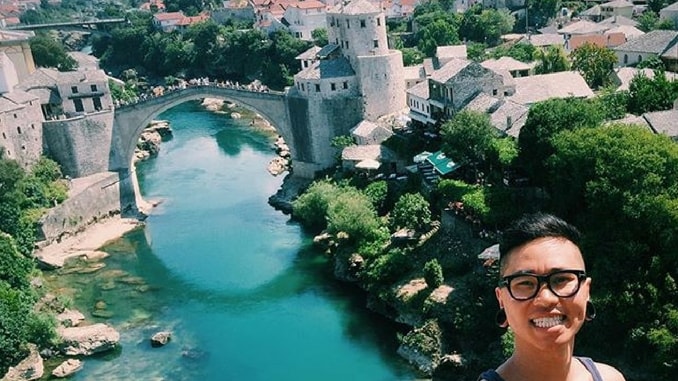Duration : 1h ;
Contact : info@tourguidemostar.com
What is included?
Tabhana
During the 16th century in Mostar, in the čaršija (carshiya ) there were more than 30 various types of crafts. They were predominantly grouped into guilds which were arranged according to the types of professions after which even the streets (carshiyas) were named, bearing the features of distinct carshiyas.
The old Tabhana area in Mostar was built in the middle of 16th century, at the place where the river Radobolja flows into the Neretva. Before 1664, the tanners moved to the present-day tannery, the Upper or Large Tabhana.
At that time Mostar became an important economic center because of the trades and craftsmanship that developed in the carshiyas. The city attracted Armenian, Greek and Jewish traders to settle here and start their own businesses.
They also developed business relations with people from Dubrovnik, Trieste, Venice and Istanbul. Mostar was the place where trade flourished. Over time many successful traders and salesman from Mostar opened their shops in Paris.
Franjevačka
Today the Catholic Church and the Franciscan Monastery stand together as one the most beautiful architecture examples in Mostar.
They were built in 1866. during the rule of the Ottoman Empire.
Today’s church with its dimensions, appearance and the bell tower (107m high), dominates the city of Mostar.
This complex boasts a library with 50,000 ancient western and eastern scriptures and books. It is the largest library of such characteristics in Herzegovina and this region. In the monastery there is also an important collection of paintings by Italian masters of the XVI and XVII century, and also works from modern artists.
Kriva ćuprija
Kriva cuprija is a stone one-arch bridge of small dimension and closely resembles the Stari Most. The arch is a perfect semicircle 8.56m in width and 4.15m in height. Built in 1558, eight years prior to the more famous Old Bridge, it is believed to have been built as a trial attempt for the following, more daring, construction.
Stari most
The bridge spans the Neretva river in the old town of Mostar, the city to which it gave the name. The city is the fifth-largest in the country; it is the center of the Herzegovina-Neretva Canton of the Federation of Bosnia and Herzegovina and the unofficial capital of Herzegovina. The Stari Most is hump-backed, 4 meters (13 ft 1 in) wide and 30 meters (98 ft 5 in) long, and dominates the river from a height of 24 m (78 ft 9 in). Two fortified towers protect it: the Halebija tower on the northeast and the Tara tower on the southwest, called “the bridge keepers” (natively mostari).
The original bridge was commissioned by Suleiman the Magnificent in 1557 to replace an older wooden suspension bridge of dubious stability. Construction began in 1557 and took nine years: according to the inscription the bridge was completed in 974 AH, corresponding to the period between 19 July 1566 and 7 July 1567. Tour directors used to state that the bridge was held together with metal pins and mortar made from the protein of egg whites.Little is known of the building of the bridge, and all that has been preserved in writing are memories and legends and the name of the builder, Mimar Hayruddin (student of Mimar Sinan, the Ottoman architect). Charged under pain of death to construct a bridge of such unprecedented dimensions, the architect reportedly prepared for his own funeral on the day the scaffolding was finally removed from the completed structure. Upon its completion, it was the widest man-made arch in the world
According to the 17th-century Turkish traveler Evliya Çelebi, the name Mostar itself means “bridge-keeper.” As Mostar’s economic and administrative importance grew with the growing presence of Ottoman rule, the precarious wooden suspension bridge over the Neretva gorge required replacement. The old bridge on the river “…was made of wood and hung on chains,” wrote the Ottoman geographer Katip Çelebi, and it “…swayed so much that people crossing it did so in mortal fear”. In 1566, Mimar Hayruddin, a student of the great architect Sinan, designed Stari Most during the reign of Suleyman the Magnificent. The bridge was said to have cost 300,000 Drams (silver coins) to build. The two-year construction project was supervised by Karagoz Mehmet Bey, Sultan Suleyman’s son-in-law and the patron of Mostar’s most important mosque complex called the Hadzi Mehmed Karadzozbeg Mosque.
The bridge, 28 meters long and 20 meters high (90′ by 64′), quickly became a wonder in its own time. The famous traveler Evliya Çelebi wrote in the 17th century that: the bridge is like a rainbow arch soaring up to the skies, extending from one cliff to the other. …I, a poor and miserable slave of Allah, have passed through 16 countries, but I have never seen such a high bridge. It is thrown from rock to rock as high as the sky.
The arch of the bridge was made of local stone known as tenelija. The shape of the arch is the result of numerous irregularities produced by the deformation of the intrados (the inner line of the arch). The most accurate description would be that it is a circle of which the centre is depressed in relation to the string course.
Instead of foundations, the bridge has abutments of limestone linked to wing walls along the waterside cliffs. Measuring from the summer water level of 40.05 m (131 ft 5 in), abutments are erected to a height of 6.53 meters (21 ft 5 in), from which the arch springs to its high point. The start of the arch is emphasized by a molding 0.32 meters (1 ft 1 in) in height. The rise of the arch is 12.02 meters (39 ft 5 in)
Stari Most diving is a traditional annual competition in diving organized every year in midsummer (end of July). It has been done 477 times as of 2013. It is traditional for the young men of the town to leap from the bridge into the Neretva. As the Neretva is very cold, this is a very risky feat and only the most skilled and best-trained divers will attempt it. The practice dates back to the time the bridge was built, but the first recorded instance of someone diving off the bridge is from 1664. In 1968 a formal diving competition was inaugurated and held every summer. The first person to jump from the bridge since it was re-opened was Enej Kelecija.
Kujundžiluk
In the center of the city, you can admire one of the oldest parts of Mostar, the Kujundžiluk, which winds along a small, pretty, cobbled street, dating back to the middle of the 16th century, where characteristic crafts shops and traditional restaurants are found. In the past, it was the pulsing heart of the business world in the whole of the region with more than 500 workshops in the Ottoman era.
Even with the changes due to the passing of time, this road has maintained its ancient outward appearance, characterized by its ever-present mosques and small inns – and has maintained, up till now, some of its most characteristic crafts, such as the working of copper and the weaving of carpets.
Together with the Old Bridge, undoubtedly the chief attraction of the whole district, the Old Bazaar represents a characteristic example of the architecture and, at the same time, of the daily life of Mostar, as seen in the vitality of the workshops, in the little restaurants (where you can taste excellent traditional dishes) and in the crowded cafes which characterize the local atmosphere.
Koski Mehmed Pasha Mosque
Situated on the left bank of the Neretva river, just about 150 meters north of the Old Bridge, it`s the second largest mosque in Mostar. The interior is 12,4×12,4 meters.
Construction of the mosque was finished in 1619. after starting it started in the early 17th century.
The entrance leads to the beautiful courtyard where you can enjoy the colorful garden, shops, restaurant and Šadrvan fountain. The fountain had two purposes, one being architecture attraction and the second one was for people to wash and clean their hands before going to religious ceremonies.
Those who wish to climb up the minaret (lighthouse) stairs will be charged a fee. After climbing up the stairs, you will be able to enjoy the most beautiful panoramic view of the city.
After passing the šadrvan in from of the mosque comes the old cemetery where you can see medieval tombstones and there is also a small passage which leads to the picturesque terrace.
















